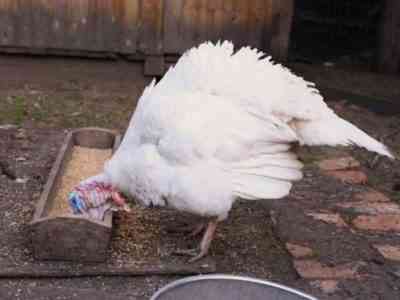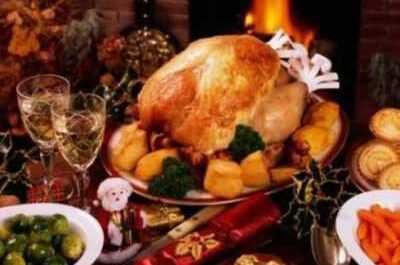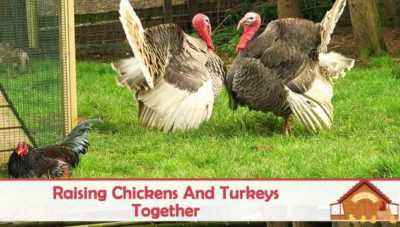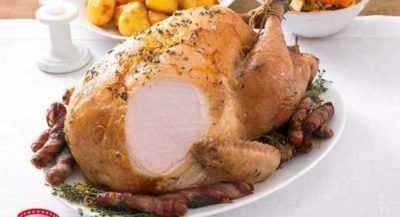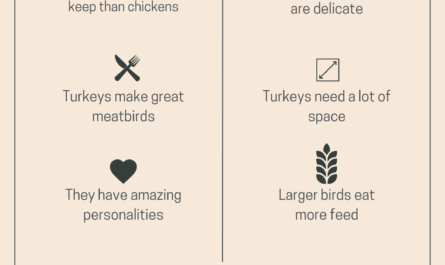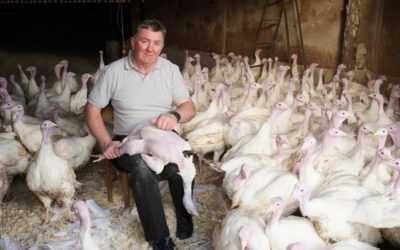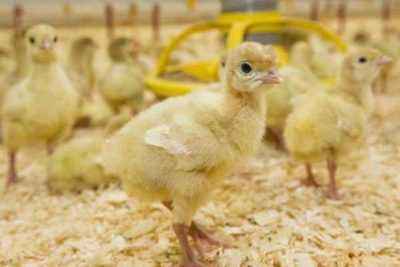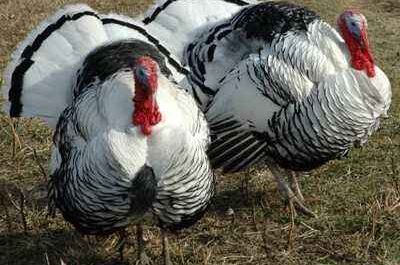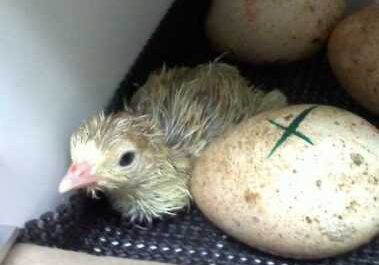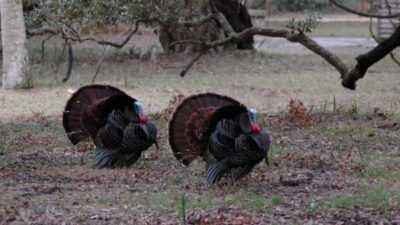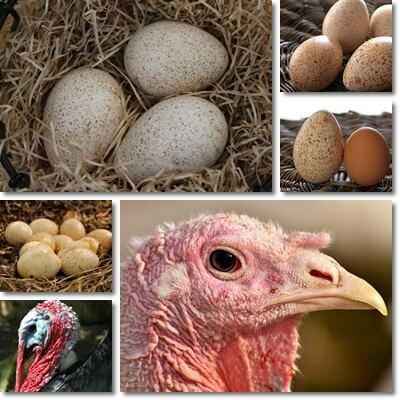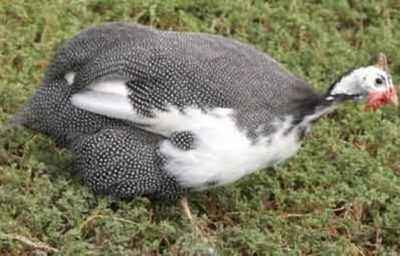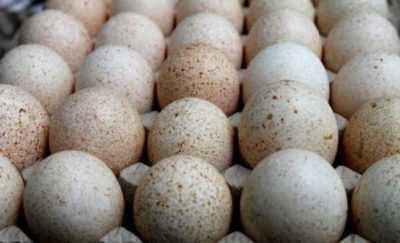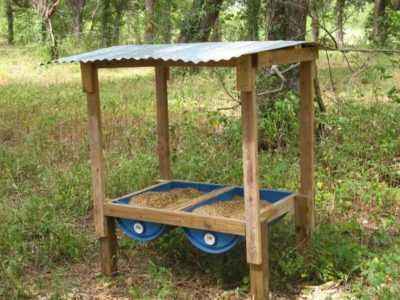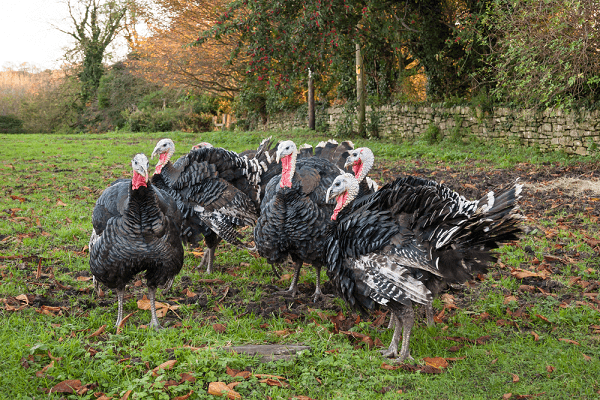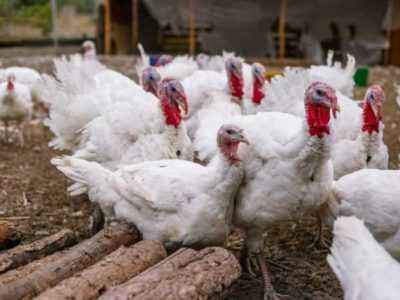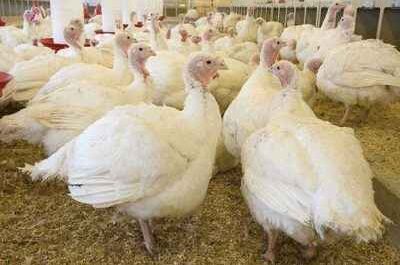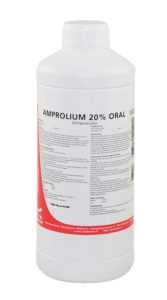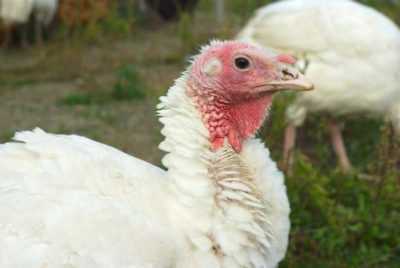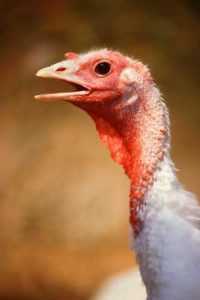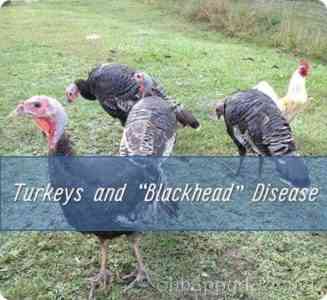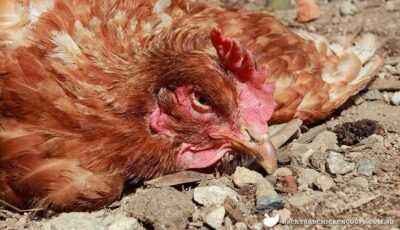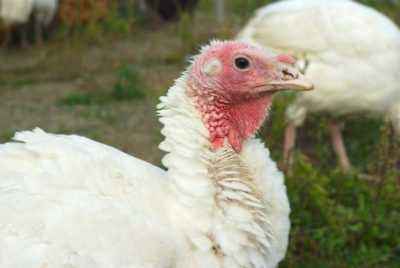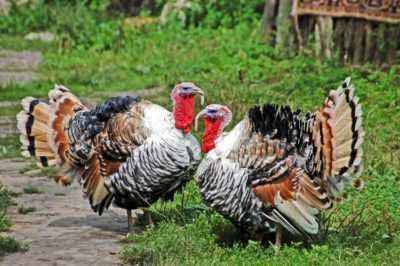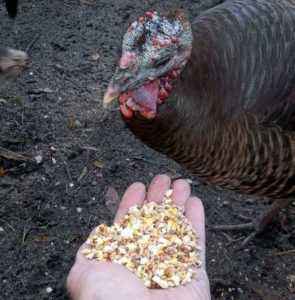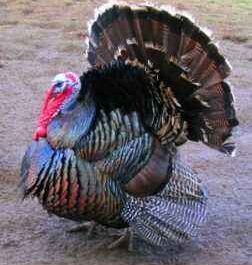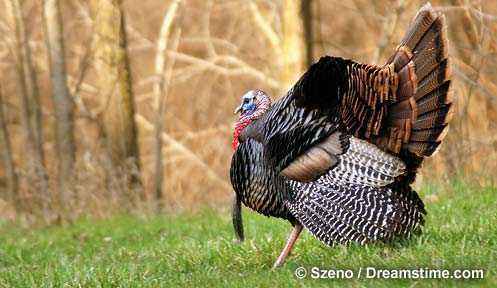Today, turkey poultry in the homestead economy is often grown for meat and subsequent use in breeding. The maintenance and increase of turkey livestock depends on properly organized maintenance and care of turkey poults. In the future, turkey poultry is a large poultry, therefore, when breeding turkeys, the choice of the method of keeping the young livestock and properly organized feeding with the necessary diet are of no small importance.It also depends on how quickly the Turkeys grow to the desired size and at what rate of intensity they will gain weight.
- Cell growth method
- Cultivation on walking
- Cultivation by the open walking method
- Cultivation in aviaries
- Comfort requirements
- Specifics of feeding young animals
- Initial diet
- Age from 1 week to 1 month
- Age less than 2 months
- t 2 months before slaughter
- The most common diseases
- Small-scale disease
- Mycoplasmosis
- Worms <
- Newcastle disease
- Diseases of the legs
- White diarrhea
- Diseases of goiter
- Cases of biting
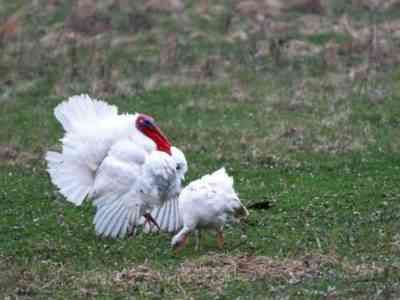
Maintenance and care of poultry
Cellular method of growing
Only the light turkey breeds are suitable for the cellular method of keeping turkey poults, which are not distinguished by large intensive weight gain. When placing young animals in a cage, it must be remembered that the bird landing rate is no more than two individuals per cage.In this case, males and females of turkeys are kept separately.
The maximum term for the cellular maintenance of turkeys is until they reach four months of age. The farmers give the greatest preference in the case of cell cultivation to the content of young animals up to 1.5 months with their subsequent sale.
Among the main advantages that the cell content of poultry gives:
- the opportunity saving in space by arranging cages with birds in a tiered way, while the efficiency of using free space is doubled,
- resulting from the saving of space, the opportunity to create a larger number of turkey poultry with a potential of 1.7-1.8 times,
- simplified care for young animals with a subsequent increase in the productivity of technical personnel in industrial production, reducing the time for caring for turkey poultry in a private economy.
However, with a cellular regime of turkey poultry, the disadvantages of this method exceed its advantages:
- Poultry suspend the growth rate, starting from a month old,
- the rate of turkey breeding is lost,
- diseases of the joints of the legs (arthritis ) appear due to a reduction in the conditions of limited space of physical activity and lack of physical activity,
in some In some cases, wing fractures are observed due to large scale in cramped cellular conditions.
In addition, in the conditions of farmer’s cell cultivation, farmers often have a tendency to fearful behavior, because of which they react to loud noises, begin to stomp each other and fight in locked cages, receiving numerous injuries. Also, with limited living in poultry, excessive accumulation of fat cells in the liver was noted.
Growing on a walk
Most breeders prefer the walking method of keeping poultry, since it provides the greatest comfort for turkey poults. It can be in one of two ways – in the form of an open range and by keeping it in enclosures.
Cultivation by an open walking method
It is optimal for breeding turkeys, but directly tied to the constant presence of a person, as throughout the day the Poultry go outside to grazing areas.The turkey livestock independently caters for itself: it finds food, pecking not only vegetation, but also eating insects, and relieves physiological needs directly in the places of walking.
When the period of maturity begins, the turkeys and turkeys are grazed separately.
An open turkey is suitable for a turkey that is already 1.5 months old. Among the main advantages of this content:
- increased reproduction rates,
- increased immunity of birds through the intake of natural vitamins,
- reduced financial costs for feed,
- improvement of the physiological state of health of birds due to constant physical activity,
- increase in the growth rate of growth of turkeys and turkeys,
- lack of additional capital investments and simplification of care.
Before a turkey livestock is released into the open, it is examined for the presence of open hatches and pits, as well as for the presence of foreign objects that could threaten the life and health of birds.
Cultivation in aviaries
With open-air cages, turkey poultry must be provided with adequate space at the rate of at least 10 square meters per individual.
For aviary, they try not to combine turkey poults, whose age varies by more than two weeks.
The bird must be provided with free space for walking
Some farmers, if there is enough space, try to enclose two free plots that are changed for walking and grazing birds. If there is no possibility of grazing, the birds are additionally fed with fresh herbs when they are kept in enclosures.
Comfort requirements
After hatching turkey poults, they leave the nests and land into separately prepared boxes and create the necessary microclimate in the room. The birth of chicks most often occurs in the spring, and a little less often in the autumn, because the thermal regime is often maintained by means of artificial heating using heaters and by warming the room. In summer, the temperature in the room should not exceed 25 degrees, and in winter should not fall below 5. To regulate heat transfer, resort to ventilation and ventilation. The room should be equipped with feeders and drinking bowls .
Specifics of feeding young calves
A balanced diet allows for an intensive weight gain of turkey poults, birds should weigh up to 20-30 kilograms.Feeding rates that give young animals, based on one chick, are given in the table:
| age, weeks | Feeding rate, grams |
| 1 | 10 |
| 2 | 25 |
| 3 | 40 |
| 4 | 60 |
| 5 | 75 |
| 6 | 90 |
| 7 | 110 |
| 8 | 130 |
| 9 | 155 |
| 10 | 175 |
| 11 | 200 |
| 12 | 220 |
| 13 | 235 |
| 14 | 250 |
| 15 | 260 |
| 16 | 280 |
| 17 | 285 |
| 18 | 290 |
| 19 | 295 |
| 20 | 295 |
| 21 | 300 |
| 22 | 305 |
| 23 | 310 |
| 24 | 310 |
| 25 | 300 |
For adults, the daily norm will be 260 grams to females and 500 grams to males. It is possible to feed using the normalized feeding method using balanced feed mixtures. With predominantly natural nutrition, turkeys need to be fed plenty of turkeys.
The initial diet
When it is first born, when the chick has just hatched, it is soldered with water into which glucose is added. Only after eight to ten hours the turkeys are given the first food, for the start they make a mixture, which includes a crushed egg with cornmeal and wheat bran, from which you can make small balls with your hands and put it on a paper sheet. You can watch the video on how to make food yourself.
Before reaching a weekly age, cottage cheese is present in the diet of young animals, they are given green vitamins in the form of dandelion, nettle, milkweed, alfalfa, green onion.
In order to avoid indigestion, the introduction of new feed for turkey poultry is carried out gradually. Purin’s well-recommended compound feed.
After three to five days, wheat mixes are added to the diet, then barley and oatmeal are added.
The frequency of feeding turkey poults until the weekly age is daily. at three o’clock. This is the time they mostly sleep.
Age from 1 week to 1 month
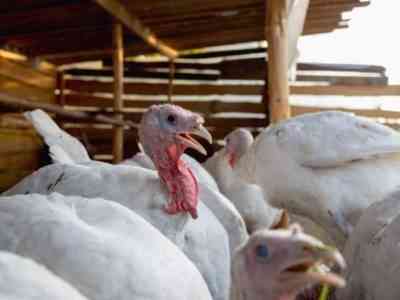
Access to water should be free
During this period of active growth, the total percentage of greenery increases and reaches the level of 30%.The most suitable nutrition for children under one month of age will be balanced ready-made feed mixtures , and when introduced into the feed, the proportion should not exceed 15 percent of the total feed volume so that the birds grow and gain weight fully. Drinking bowls with water are installed for unlimited access to them.
With an increase in reaching a month of age, when individuals must weigh up to 2 kilograms, we can talk about the right food.
starting from the age of 2 weeks to 1 month, chalk and flour are mixed into turkey feeds.
The frequency of feeding until one month of age is four hours apart.
Age up to 2 months
A monthly turkey gradually switches to three meals a day, as growth activity begins to decline. The main share of the feed ration falls on crops, greens, bran and corn. At the same time, it is necessary to increase the amount of protein feed by adding meat and fish waste to the feed.
From 2 months to slaughter
Two months of age is almost the same as the previous one, only part increases cereals in the amount of nutrition. Poultry is transferred to the walking method.
If the goal is to grow turkey poultry for meat , they can be fed up to five months when the price of feed justifies the result after slaughter.For breeding purposes, an adult male can be kept for up to two years, a female for up to three years.
The most common diseases
Care of Turkeys in the process of their maintenance and breeding involves timely prevention and treatment of poultry-specific diseases . Livestock preservation depends on the time taken.
Smallpox disease
Smallpox is transmitted from sick individuals by insects and leads to the destruction of the sick population and vaccination of healthy embryo vaccines in 6 weeks old. The initial symptoms are young animals’ refusal to eat, ruffled feathers and hanging wings.
Mycoplasmosis
Mycoplasmosis is transmitted from sick individuals and is provoked by reduced immunity associated with impaired care of Turkey. It leads to disruption of the respiratory organs and inflammatory processes of the eyes. Among the signs is a lack of coordination of movements. For treatment, you need to show sick turkeys to a veterinarian, after which you can prescribe antibiotic drugs (erythromycin or chloramphenicol).
Worms
The sources of worms are the earth, helminth eggs in litter, sick individuals and feed. Anthelmintic drugs should be given for treatment and prevention.
Newcastle disease
An infectious disease leads to paw paralysis, cannot be treated, but requires a vaccine with a medicine against the pathogen.Vitamins and mineral supplements are given as prophylaxis; they increase the volume of fresh herbs. Many farmers in the first-aid kit have trivit for these purposes.
Diseases of the legs
It occurs as a result of a decrease in motor activity due to the large weight of the bird. At the same time, the paws often swell, the birds limp and fall. As a prophylaxis, increase the dose of calcium-containing products by adding cottage cheese, shell, chalk.
White diarrhea
Pullorosis is an infectious disease affecting the intestines. at 1 month. Causes of the disease, the causative agent of the salmonellosis group is manifested by a decrease in appetite and weakness, higher By lowering temperature and loose stools, the bird loses weight. It is treated with antibiotics.
Diseases of the goiter
The cause of hardening of the goiter is malnutrition, which is reduced to solid food. For better grain processing, you need to add shell and chalk.
Cases of biting
The reasons for biting may be during a period of active growth when feathers or individual parts of the body are plucked out of Turkey. Biting can occur due to improper nutrition with a deficiency of vitamins, especially amino acids. The field of revision of the feed ration usually tends to disappear.
